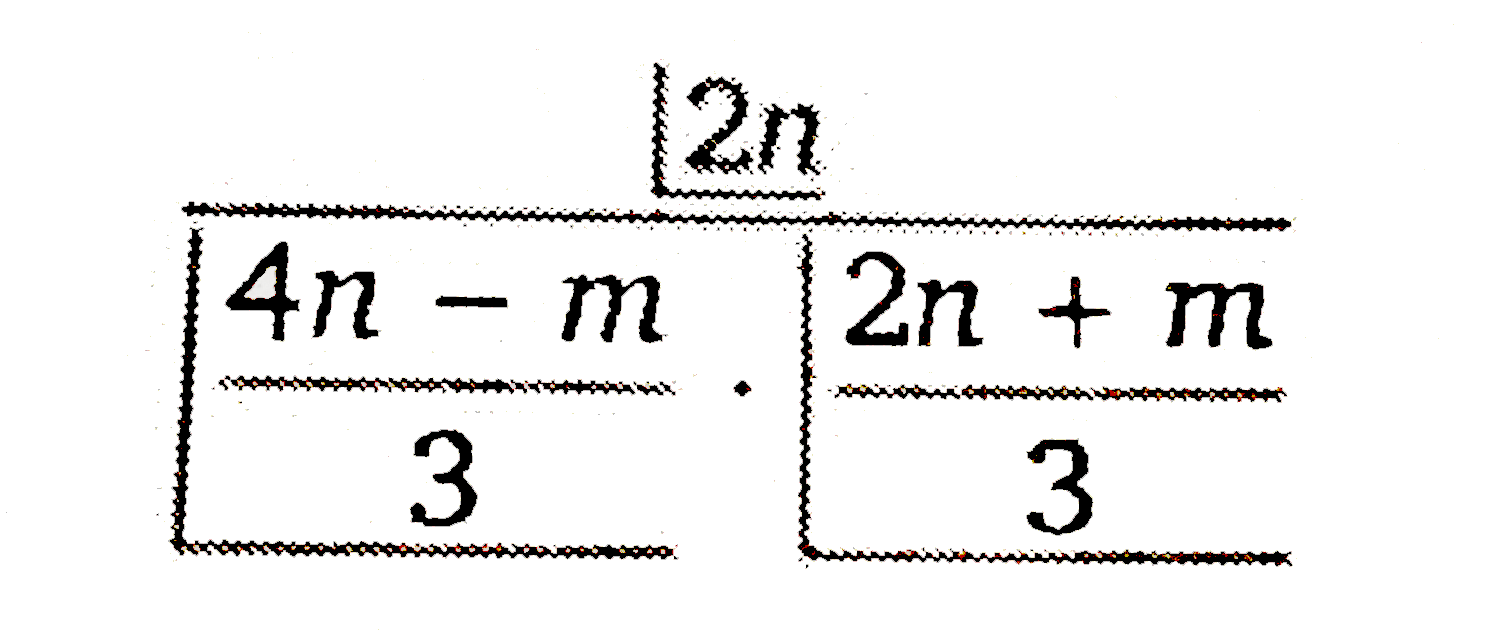Let x, y be positive real numbers and m, n be positive integers, The maximum value of the expression
xmyn(1+x2m)(1+y2n) is
12
14
m+n6mn
1
The correct Answer is:B
To find the maximum value of the expression
E=xmyn(1+x2m)(1+y2n)
where x,y are positive real numbers and m,n are positive integers, we can utilize the Arithmetic Mean-Geometric Mean (AM-GM) inequality.
1. Apply AM-GM Inequality:
We start by applying the AM-GM inequality to the terms 1 and x2m:
1+x2m2≥√1⋅x2m=xm
This implies:
1+x2m≥2xm
2. Apply AM-GM Inequality Again:
Similarly, apply the AM-GM inequality to the terms 1 and y2n:
1+y2n2≥√1⋅y2n=yn
This implies:
1+y2n≥2yn
3. Multiply the Results:
Now, we multiply the two inequalities obtained:
(1+x2m)(1+y2n)≥(2xm)(2yn)=4xmyn
4. Rearranging the Expression:
From the above inequality, we can rearrange it to find an upper bound for our expression E:
E=xmyn(1+x2m)(1+y2n)≤xmyn4xmyn=14
5. Conclusion:
Thus, the maximum value of the expression E is:
14
We start by applying the AM-GM inequality to the terms 1 and x2m:
1+x2m2≥√1⋅x2m=xm
This implies:
1+x2m≥2xm
Similarly, apply the AM-GM inequality to the terms 1 and y2n:
1+y2n2≥√1⋅y2n=yn
This implies:
1+y2n≥2yn
Now, we multiply the two inequalities obtained:
(1+x2m)(1+y2n)≥(2xm)(2yn)=4xmyn
From the above inequality, we can rearrange it to find an upper bound for our expression E:
E=xmyn(1+x2m)(1+y2n)≤xmyn4xmyn=14
Thus, the maximum value of the expression E is:
14
Topper's Solved these Questions
- JEE 2019BOOK - CENGAGECHAPTER - JEE 2019EXERCISE - Chapter 1
5 Videos
- JEE 2019BOOK - CENGAGECHAPTER - JEE 2019EXERCISE - Chapter 2
7 Videos
- JEE 2019BOOK - CENGAGECHAPTER - JEE 2019EXERCISE - chapter -3
1 Videos
- INVERSE TRIGONOMETRIC FUNCTIONSBOOK - CENGAGECHAPTER - INVERSE TRIGONOMETRIC FUNCTIONSEXERCISE - Question Bank
24 Videos
- LIMITSBOOK - CENGAGECHAPTER - LIMITSEXERCISE - Question Bank
30 Videos
Similar Questions
Knowledge Check
If are positive integers, maximum value of xm(a−x)n in (0,a) is :
Amm(a−m)nBmmnnCmmnnam+n(m+n)m+nDNone of theseLet x and y be two positive real numbers such that x + y = 1. Then the minimum value of 1x+1y is-
A2B52C3D4
If xandy are positive real numbers and m,n are any positive integers, then xnym(1+x2n)(1+y2m)<14
View SolutionLet x, y, z be three positive real numbers such that x+y+z=1 then the maximum value of the expression (1−x)(2−y)(3−z) is __________
View SolutionIf x,y is positive real numbers then maximum value of xmym(1+x2m)(1+y2n) is (A) 14 (B) 12 (C) m+n6mn (D) 1
View SolutionLet x and y be two positive real numbers such that x+y=1. Then the minimum value of 1x+1y is
View SolutionIf 'n' is a positive integer then prove that the coefficient foxm in the expansion of (x2+1x)2n is :

View SolutionIf 'n' is a positive integer then prove that the coefficient foxm in the expansion of (x2+1x)2n is :

View Solution
